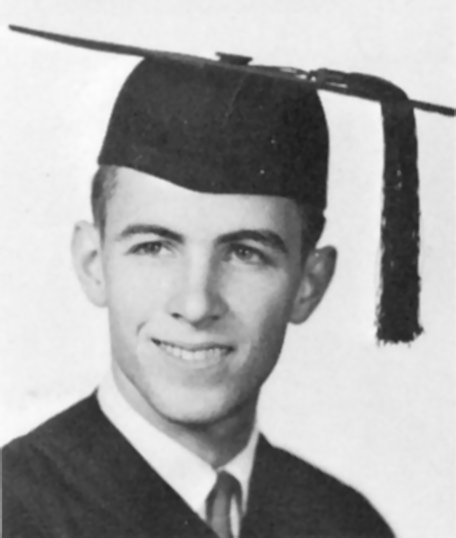
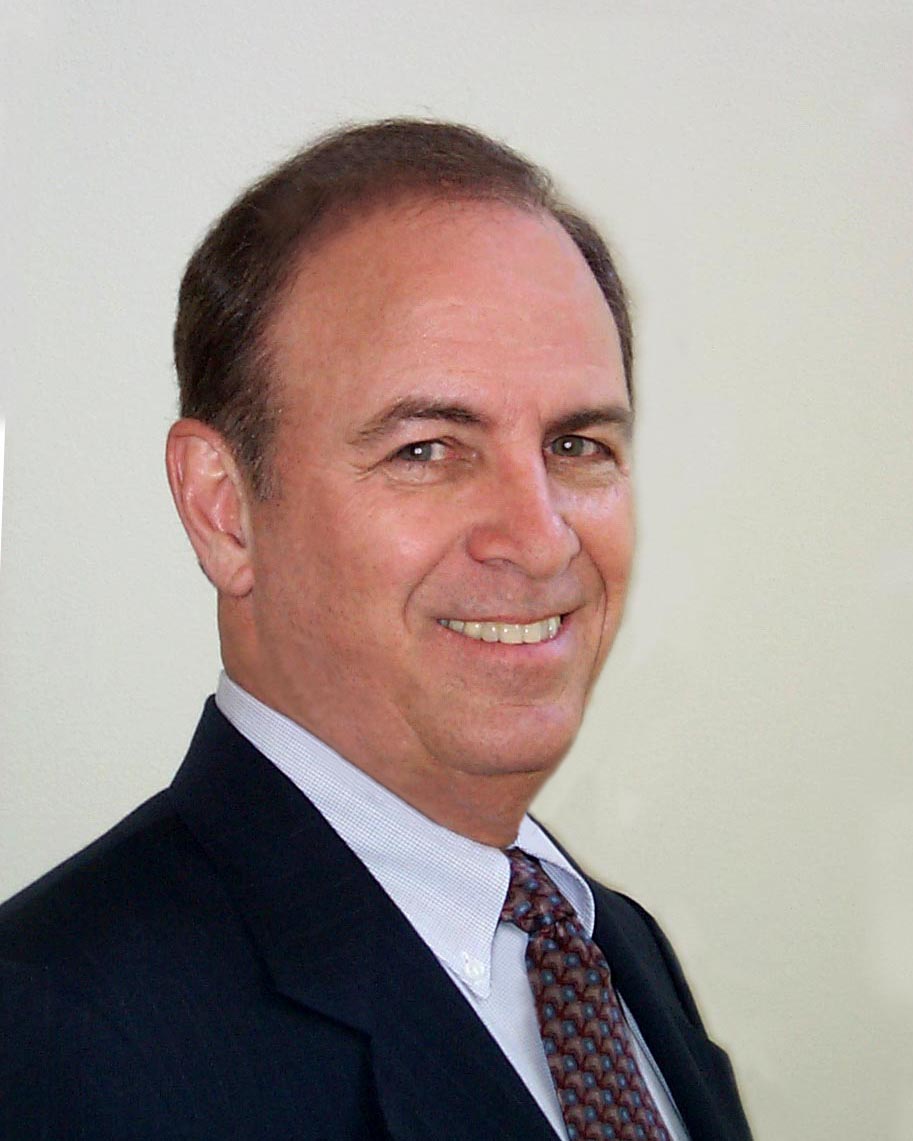
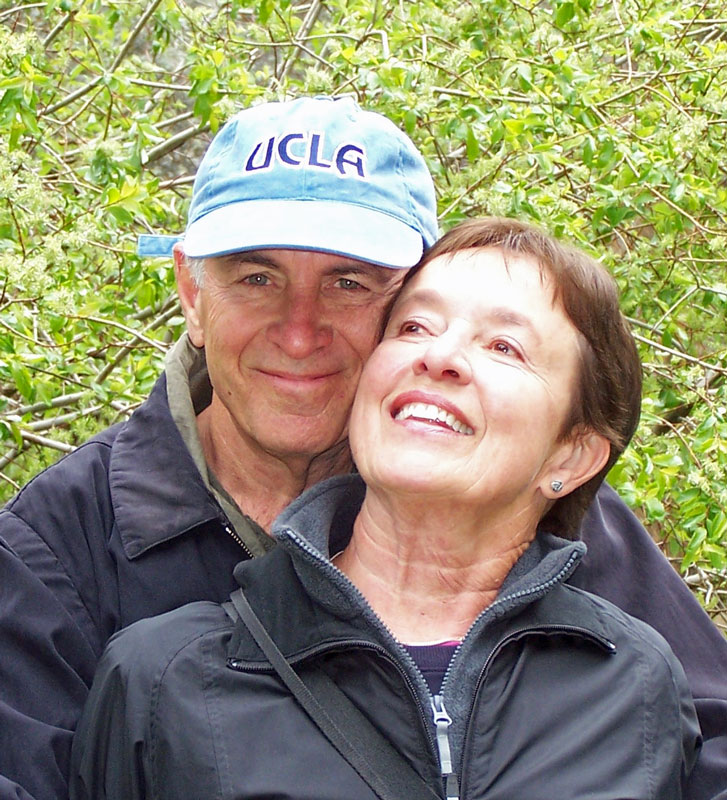
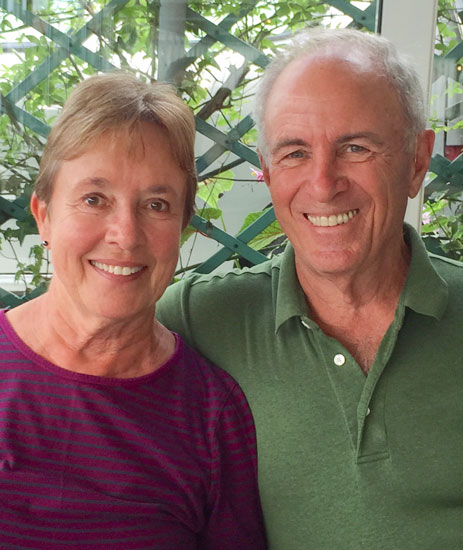
P. Michael Henderson




Since my last update (below) not a lot has happened, which I suppose is a good thing at our age. Judy and I have started traveling a bit and I keep a blog of our travels, which you can see here. Judy continues doing a few concert gigs with the Pasadena Symphony. I teach some woodworking classes and do a few projects - but we don't need any more furniture for our house so I'm limited in what I can do.
I took up beekeeping about five years ago and that has been very interesting. We have hybrid bees in our area which is good and not so good. On the good side, the hybrid bees are able to resist most of the diseases and pests that afflict European bees, but the hybrid bees are a bit more defensive than the European bees. I do a blog of my beekeeping here.
Here's a short video of me removing a hive of bees from a fairly large birdhouse. I'm using a bee vacuum to collect the bees and have to cut the comb to remove it from the birdhouse. The video only shows a very short part of the process.
Judy enjoys playing golf and I occasionally join her - but I'm not much of a golfer. Here's a picture of me on a golf course in Hawaii.
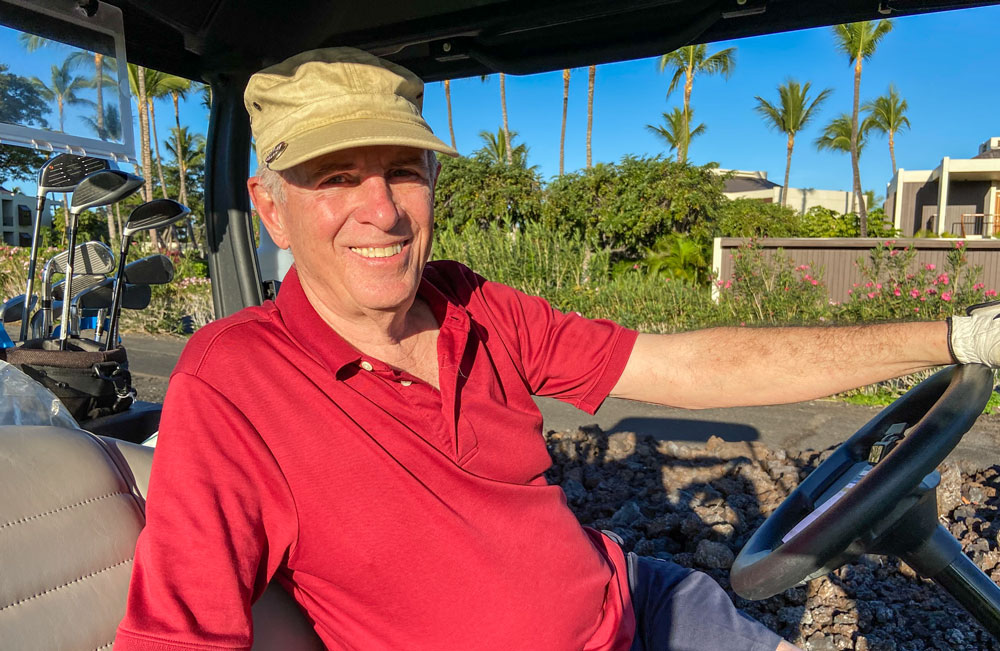
We have a dog named Skipper that gets me out walking twice a day.
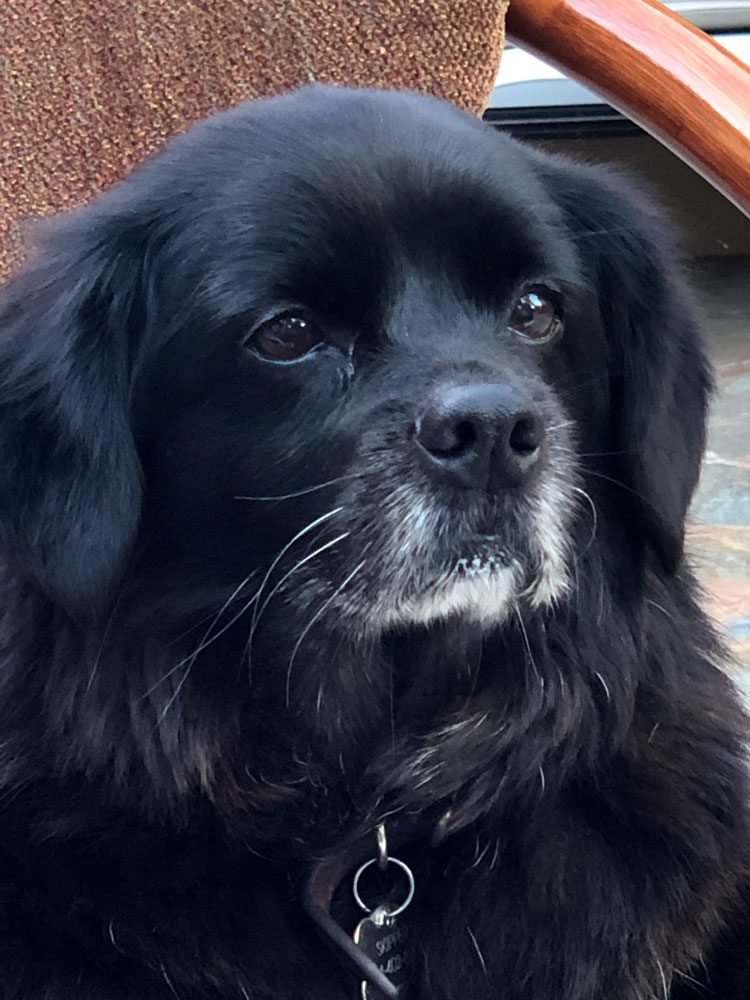
I feel fortunate that my last job move was to southern California. California really is the nearest thing to Paradise on earth. We have wonderful weather, beaches, mountains, and an ethnically diverse, well educated, progressive population. You could surf in the morning and snow ski in the afternoon.
Judy and I are are healthy, and we're thankful for that. I occasionally miss the challenge of work, but all-in-all we're enjoying retirement.
[A note to the veterans in our class. If you served in Vietnam the VA makes the assumption that you were exposed to Agent Orange and that can lead to some benefits for you.]
2020 Reunion
A lot has happened in my life since our last reunion. The biggest thing is that my wife, Norma, was diagnosed in 2000 with idiopathic pulmonary fibrosis (IPF). IPF is caused by the body's immune system attacking the sacs of the lungs, making them fibrous so that they lose their elasticity and their ability to function. The average lifespan after diagnosis is about five years. There's no cure and the only treatment is a lung transplant, which Norma received in 2004 at UCLA.
The recovery from the surgery was difficult but Norma recovered and had a number of good years with the transplanted lung. However, in about 2009 she began to decline and passed away early in 2010. We had been together for forty years and had been married for thirty-eight.
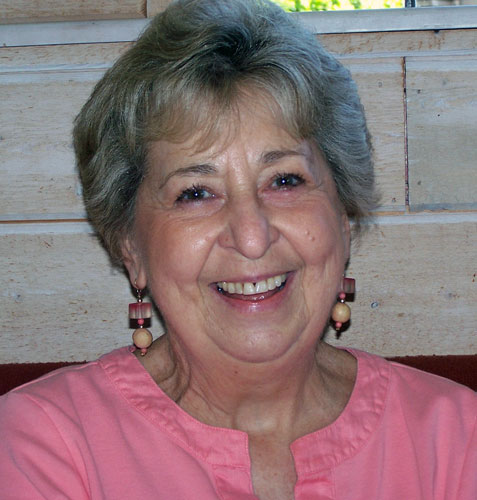
Norma and I had been warned that a lung transplant was only good for a limited time so we knew what the outcome would eventually be. I've often thought about the difference between knowing in advance that your spouse is dying, and being surprised by death, such as a car accident. When you know what's coming, you have time to prepare both emotionally and legally. Still, it's quite a shock to lose your spouse. I expect that several of you will have similar stories - age seems to do this to us.
I retired in 2003, both because of the tech crash that occurred about that time and because Norma needed a lot of care. It would have been very difficult to continue to work and also provide the care Norma needed. To occupy my time, I began doing woodwork, starting by taking classes at Cerritos Community College. I've developed my skills to the point where I now teach various aspects of woodworking, including carving, veneering, and hand cut dovetails. I was also honored to be awarded second place in a national woodworking contest sponsored by Fine Woodworking magazine.
I'm now working in marquetry, which is pictures in wood. You can see some of my work here.
Some time later in 2010, I met Judy who lived in the same area (Tustin, CA). She had lost her husband to cancer several years earlier and had actually known Norma - they belonged to the same woman's organization, AAUW. We dated and got married in 2011. Love in the autumn of our lives is different than it was in the spring. It's a deeper, stronger bond than most of us formed when we were young. I feel very lucky to have found Judy - and I think she feels the same way about me.
That's a picture of Judy and me at the top of this page.
Judy is a professional musician (cello) and has worked in the Los Angeles/Hollywood area her entire career. She's played on over 400 movie sound tracks and played with the Pacific Symphony Orchestra and the Pasadena Symphony Orchestra for many years. She has also been a member of the orchestra for the "Simpsons" TV program for the past 23 years. She retired a few years ago but still does the Simpsons and plays for the Pasadena Symphony Orchestra.
We each had a house but neither house would work for us. I had a two story house and Judy wisely suggested that, at our age, we should get a single story. As she told me, "It'll be easier moving now, than when one of us is infirm." Although Judy had a single story house, for various reasons it didn't work for me. So we sold both houses and bought a single story house in Villa Park, CA which is close to Tustin (18482 Serrano Ave, Villa Park, about four miles away from each of our houses).
The early part of our marriage was devoted to taking care of the houses - getting moved into the new one and getting our other two houses on the market and sold - we were actually able to sell both of them fairly quickly. We now have some time to do "fun" things, which has mostly consisted of travel and golf (Judy taught me since I had never played golf). We just recently got back from a trip to Minnesota and South Dakota to visit some of Judy's relatives and then we went to New Orleans in late June for a family reunion on my side.
Approaching the "three score and ten" age has caused me to look back on my life, and to look ahead to my demise. Looking back, I'm generally satisfied with my life. I feel that I was able to do some interesting work in my career and helped advance technology, especially communications. I hold thirty-two US patents, primarily on communications (those of you who are interested in this sort of thing will find my professional web site here). I served in, and survived, my generation's war. I had the opportunity to travel extensively, not only in the US but also in Europe and Asia. I took part in as many activities as I could, including climbing Mount Whitney and running some major marathons in the US (NY City, Washington DC, New Orleans over the Lake Pontchartrain bridge, and Boston). I've built quite a few furniture pieces which will hopefully survive me by many years. And I now live in the paradise of the USA, southern California, married to a beautiful, wonderful woman. It's been an interesting and full life and I feel very satisfied and happy. All I ask for is many more years of good health to spend with Judy.
In looking forward, I jokingly made Judy promise me that I would be the first to go. I told her that I never want to go through losing a spouse again. But that's something that cannot be controlled - all we can do is live day-to-day and hope that when the end comes, it's quick and painless.
I hope all of you are satisfied and happy in looking back on your life. I'm looking forward to reading your stories here.
2002 Biography
I remember that the "Senior Class Will" had me building robots (or something) out of old television parts. Well, my life has been a bit like that.
After I graduated Destrehan, I went to LSU and studied electrical engineering.
During the summers (and a couple of semesters off), I worked for a New Orleans company by the name of Offshore Raydist, Inc. (ORI) who provided precision navigation services for oil survey work (Bill Culver recommended I go to work for Raydist. I don't know how he knew of the company). The oil survey season was the summer when the gulf was not as stormy as in the winter so Raydist was happy to get college students. We were cheap labor. I worked as a navigator (or Raydist operator) running the equipment that provided the location services - remember, this was long before GPS. I worked on boats and airplanes - the airplanes were used to provide a position check to the boats once per day. Anyway, here's a picture of the first boat I worked on. It was a converted mud boat, owned by Tidex. At 87 feet it was too small to use for supplying the offshore rigs any more. Note the stiff leg derrick added to the boat. During rough weather that boat rocked and rolled. I used to always try to get a rack that ran side-to-side rather than front-to-back because there was less chance of being thrown out of your rack if bad weather came up at night. This picture was taken from the sister boat, which I also worked on. We worked 14 and 7 and there were three crews, so each time you came back from being off, you went out on the other boat. The good thing about this kind of job is that - if you didn't gamble - there was no way to spend any money for 14 days. Food and a place to sleep was provided as part of the job.
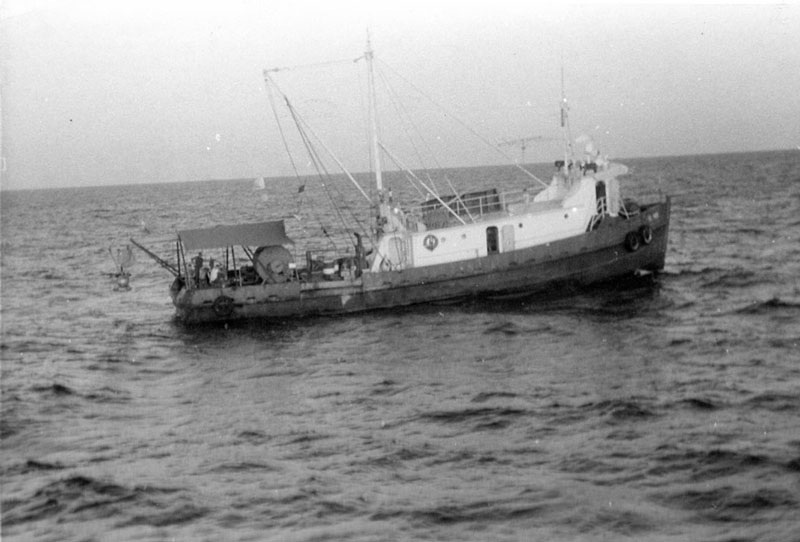
The boat had to carry excess food "just in case" so every time we finished a cruise, as we were headed in, the cook would go through the freezer and check for "expired" meat. The "expired" meat was thrown overboard. I'd ask the cook if I could have some of it and I'd pack it in the middle of my suitcase and bring it home to my parents. It was still good, just past the date the company wanted to keep it.
Later I worked on aircraft operating the same equipment. We would fly every morning to give a "lane check" to the boat working in our area. Here's a picture of one of the planes I worked on - a twin engine Piper - and a picture of the Raydist equipment installed in the plane - same equipment as on the boat. It was set up right behind the pilot's seat. You can see the aircraft gauges in the background of the picture.
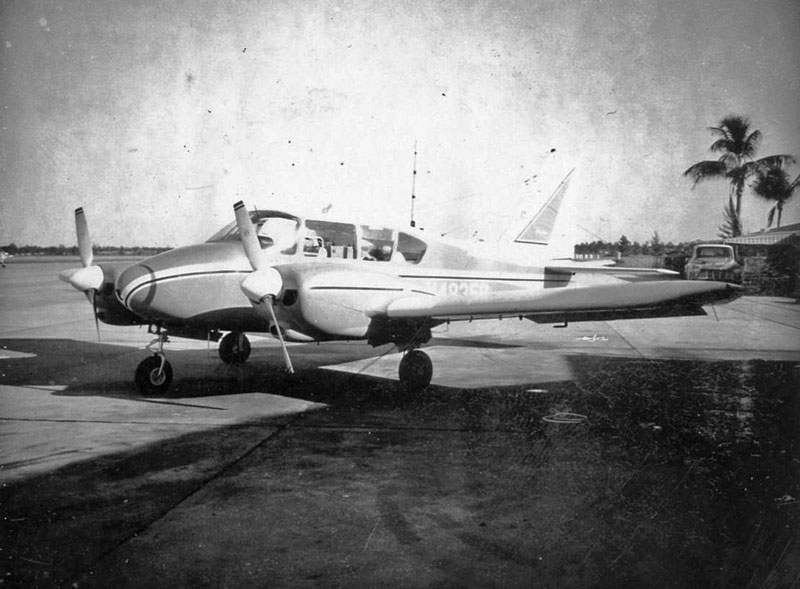
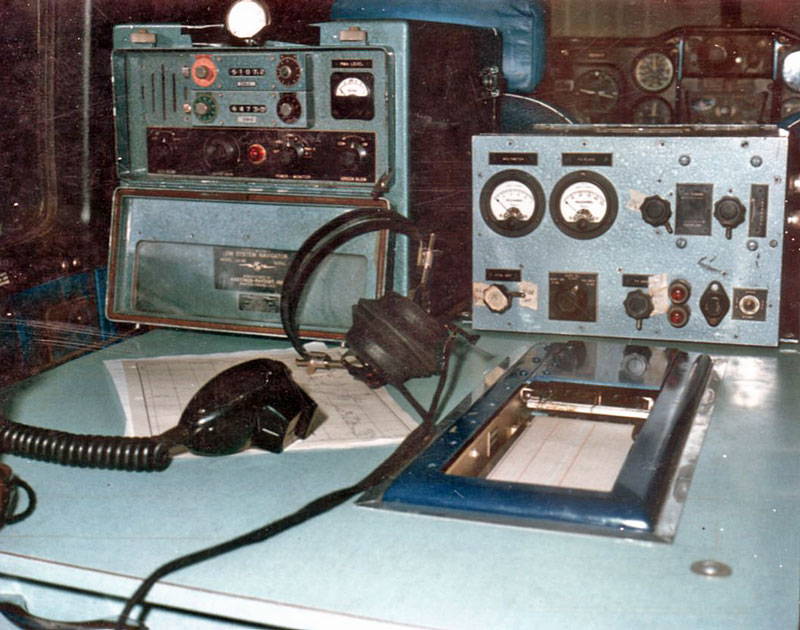
And here's a picture of the boats doing the seismic work. The boat in front - to the far left of the picture - is the recording boat. It towed a cable that had geophones spaced along the cable. The cable could be a mile long (but usually shorter) and it ran fairly shallow (we had an oil tanker cross the cable one time and it chewed up the cable).
The boat in the center of the picture is the shooting boat. It carried the explosive charges and would shoot off a charge to create a shock wave that would reflect off the rock strata and bounce back up to be recorded by the geophones. I think the explosive was about 50 pounds of ammonium nitrate/fuel oil. This picture was taken through the window of the plane discussed above.
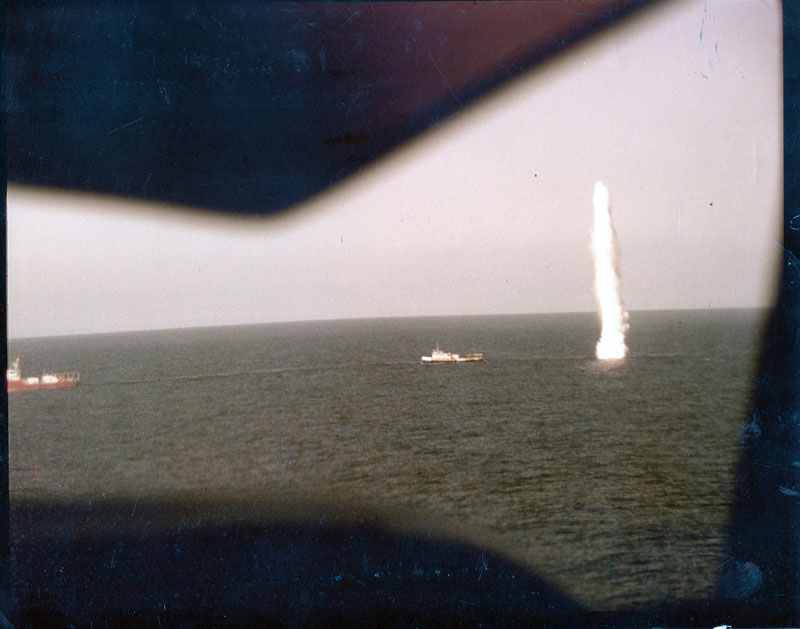
On these aircraft assignments, I lived in a motel and we flew every morning. Then I had the rest of the day off. Nice job. One of my locations for this aircraft job was Naples, FL. Naples was an uncontrolled airfield back in those days. Anyway, I signed up for flying lessons - $100 for 10 hours of instruction - and soloed in a Piper J3 Cub. That was an interesting plane. No starter, someone had to prop the plane for you, and no radio. For that matter, no gas gauge. Just a wire that stuck down into the gas tank behind the engine with a cork on the bottom. So if you could see the wire, you had gas. If the wire got short, you didn't have much left. This isn't a picture of the one I flew but it's a J3. Note the wire sticking up right behind the engine - that's the gas gauge.
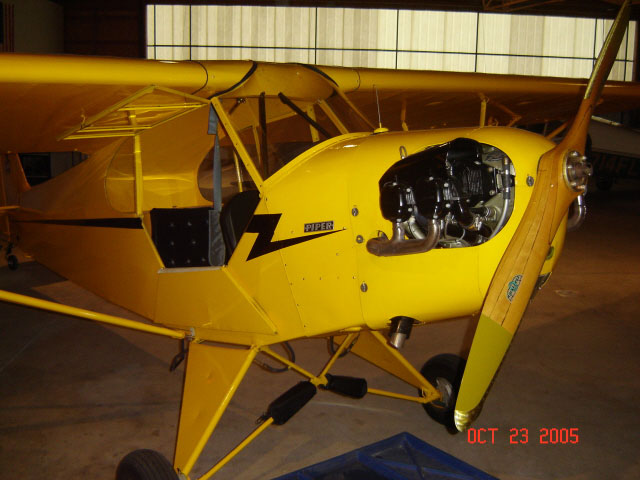
And here's my solo rag. They would cut the tail of your shirt off when you soloed.

I also set floating drilling rigs. I'd get a call with the coordinates and information about the boat I was to take. Very early in the morning, I'd go down to the dock, crank up the equipment to make sure it was working properly and tell the skipper to wake me up when we reach the calibration point (which was usually at the end of the jetty). He'd sound the horn to wake me and I'd go to work. I'd give the skipper a heading and monitor our course, giving course corrections as we went. When we reached the location, I'd start giving course corrections more rapidly. On the rear deck we had a buoy with an anchor (usually window sash weights) and enough rope to get to the bottom and give some drift. I had to estimate the amount and direction of drift and navigate the boat to a position to toss the buoy. When I gave the signal, the deckhand would toss the buoy. Once it settled, we've come along side the buoy and I'd take a reading to see how far it was off. I'd radio that reading to the person in charge on the rig. The tug boats would pull and push the rig into position, allowing for the error in the buoy location and they'd put the legs down. Then, I tell the skipper to circle the rig and call out whenever two legs lined up. I'd take a reading each time the legs lined up and then we were finished - we'd head back home. When I got back to dock, I'd call in my readings. I wish I had taken some pictures of the operation, but I was pretty busy during the interesting part of the trip. I'm amazed today that they gave that much responsibility to a college student.
I worked from Brownsville, TX (Port Isabel) to Naples, FL, and many towns in between during my time with the company.
I also bought my first car while I was in college - a 1946 Ford sedan with a flat head 6 that I paid $75 for. I completely rebuilt the engine and used it for several years. I eventually sold it to Bill Culver.

And just a few more pieces of trivia. I was a member of Delta Tau Delta Fraternity. I worked as an electronics technician part time while in college. I also worked as a professional photographer, primarily doing weddings. I had a Mamiya C33 twin lens reflex camera. Finally, here's a picture of me as a senior in college. A photographer friend of mine took the picture so I'd have something to attach to job applications. Relatives told me that I looked a lot like my dad did when he was the same age.
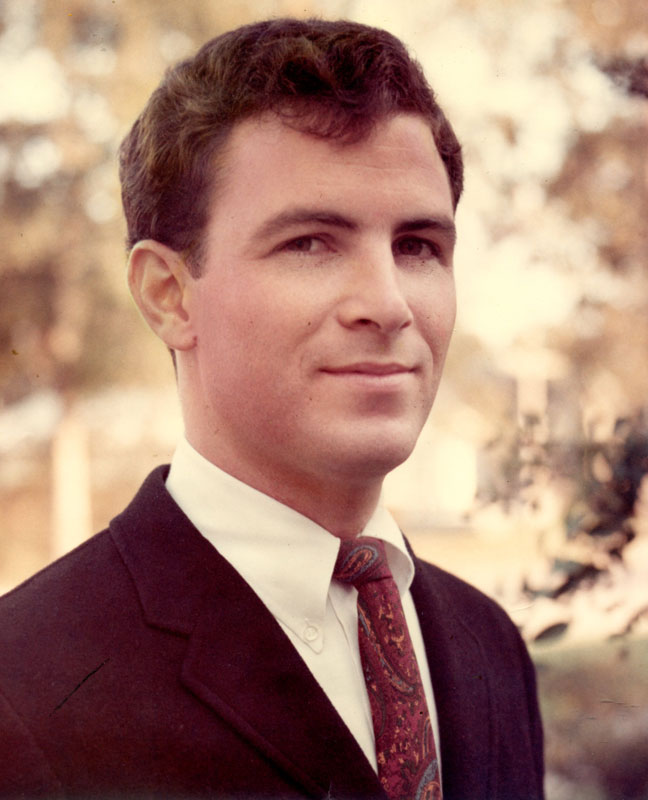
Anyway, I graduated in 1968 with a BSEE.
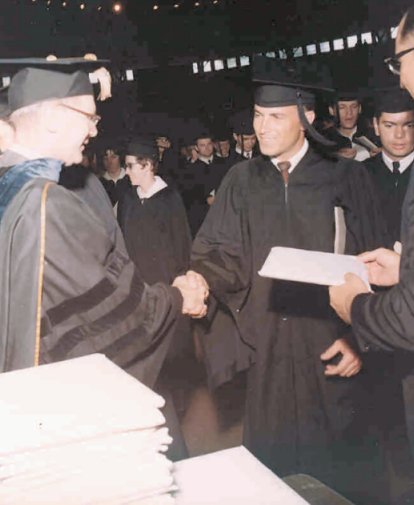
My first job out of college with with the Pacific Missile Test Facility at Point Mugu in Oxnard, CA. I drove from Baton Rouge to Oxnard in an old VW bug that I had at that time - made it just fine. This was my first time in California and I was entranced with the area. Oxnard is right on the Pacific ocean so we had the beach and cool afternoon breezes. I met some great people at the apartments I was living in and we took advantage of many of the activities possible in the state. For example, the grunion (a fish) runs at one time of the year (at night), coming up on the beach to lay eggs, then going back into the ocean, using the surf both ways. A fascinating sight.
But this was the time of the Vietnam War and I was drafted into the US Army about six months after graduation. I attended infantry officer candidate school at Ft. Benning, GA but was commissioned as a second lieutenant in the signal corps instead of the infantry - which probably saved my life. I think my degree in electrical engineering may have influenced the commissioning in the signal corps. After several really boring assignments at a couple of Army posts in the US, I volunteered to go to Vietnam. They werenít going to send me anywhere else so I just decided to get it over with.
I arrived at Bien Hoa Airbase in Vietnam about three in the morning of June 2, 1970. They put us on a bus with wire mesh over the windows and off we drove into the night, with a machine gun carrying jeep in the lead. "Helloooo, Vietnam!" But in reality, for people from south Louisiana, Vietnam wasn't so strange. It was hot, it rained a lot, and everyone ate lots of rice - just like New Orleans.
I was initially assigned as an advisor to a Vietnamese outfit but soon managed to get a transfer to MACV (Military Assistance Command - Vietnam) headquarters in Saigon, where I spent the rest of my tour working in an air-conditioned office programming large IBM computers to do a statistical analysis of the progress of the war. Every Friday there was a press briefing that featured a large map of Vietnam with data plotted on it by our programs. Now, there are a lot of problems with statistics - the military and press alike referred to that briefing as "The Friday Follies" - but that's a story for another time.
There were so many interesting things in Saigon and unfortunately I didn't take enough pictures. But here are three pictures that illustrate some of the ways to get around Saigon.
This first picture of a "pedalo", pronounced pedal-oh. It was basically a tricycle, with two wheels in the front and a seat between the two wheels. The back part was pretty much just like the back of a bicycle (from the handle bars back). You'd negotiate with the guy before you got on - if you didn't, the fare would be outrageous - and he'd pedal you to where you wanted to go. It's surprising, but you can negotiate even though we didn't speak the same language. The Americans would learn enough numbers in Vietnamese and the Vietnamese would learn enough numbers in English. One or the other would be used in the negotiations.
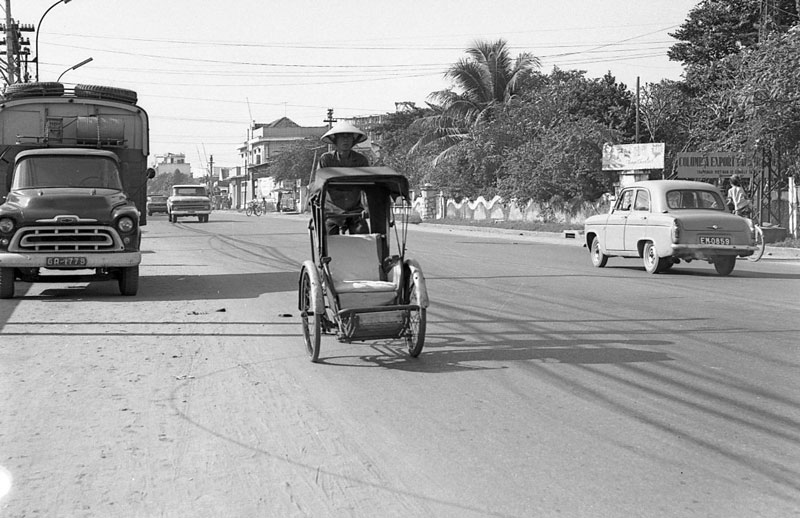
Here's a view of a pedalo from the side. Note how it was just a "bike" in the rear, with double wheels in the front.
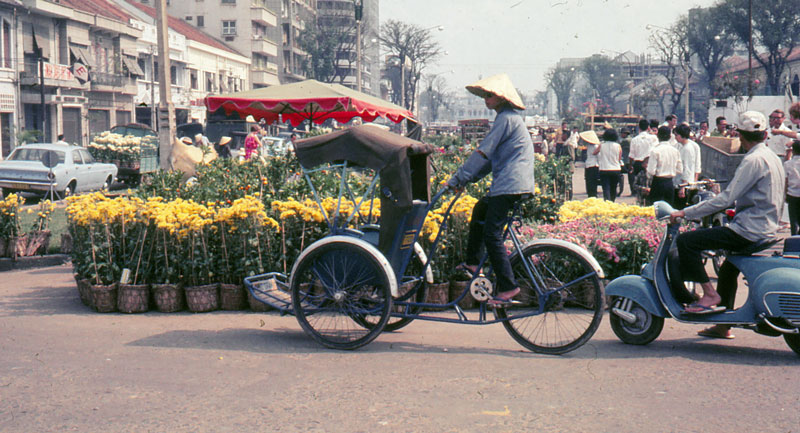
The next step up was a cyclo, pronounced sick-low or sickle-oh, which was similar to the pedalo but was based on a motorcycle. It had two wheels in front with a seat between them and a motorcycle frame and engine in back. Like the pedalo, you needed to negotiate before you sat down. I have no idea who the two GI's are in the picture. I just took the picture as they were passing by. I wanted a picture of a cyclo.
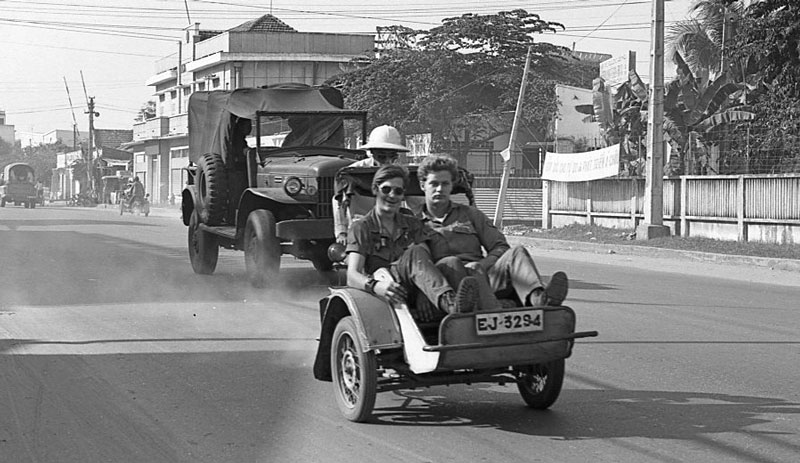
Finally, there was a taxi. The taxis were old Renault four door cars, very small and always belching blue smoke out the back (as did the cyclos). This was considered "upscale" transportation so if you were taking a lady out for dinner, you'd spring for a taxi instead of a cyclo. As usual, you had to negotiate before you got in.

Here I am in March 1971 receiving the Joint Services Commendation Medal for all those statistics.
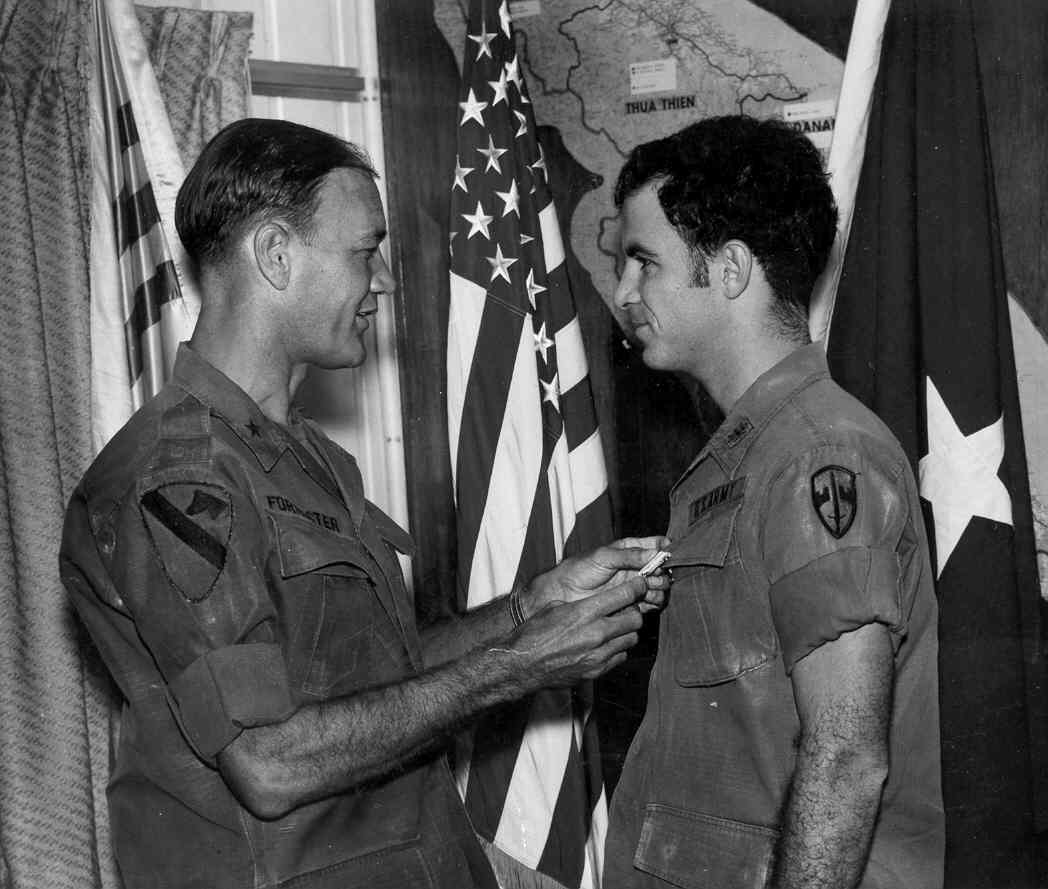
I met my future wife in the office at MACV. Norma Ferry was in Vietnam working for Control Data, who had a programming contract with the Army. Here's a picture from her 1969 Department of Defense ID card.
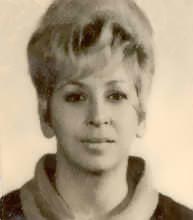
I always tell people that we met in Saigon when I dove into a foxhole during a mortar attack and fell on her, but the truth is far less glamorous - we just worked in the same office. We were married about a year after we both returned from Vietnam in August, 1971 (our anniversary was September 5, 1972). Living in a war zone produces so many crazy, funny stories - you just can't imagine. It'd be fun to swap stories with other classmates who served in the 'Nam.
Here's a picture of me on R&R in Long Hai, Vietnam (probably late 1970). It's not what it looks like - Norma took the picture. War is Hell.
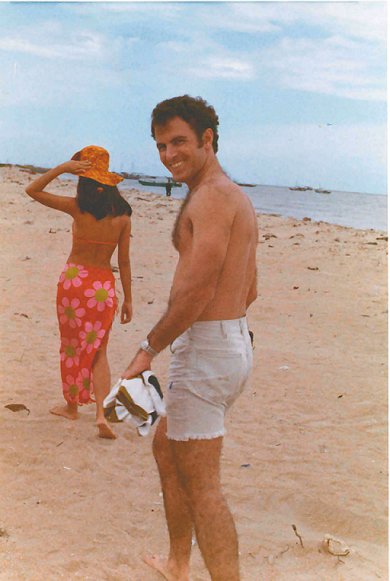
Vietnam had a major impact on me - like many others of our generation, it was the defining event of my life. It expanded my view of the world and of the people in it. I loved the Orient: the food, the culture, the crazy traffic, the dirty streets. To this day, I have a strong affinity for the Orient - maybe I was Oriental in a previous life!
I returned to Louisiana after discharge from the Army in 1971 and began my career programming computers, initially for the Louisiana Department of Highways in Baton Rouge (living in an apartment at 1936 Oleander Street), and later for Middle South Utilities at 214 West Bank Expressway in Gretna (living in an apartment in Garden Lane Apartments at 415 20th Street). Norma began her University studies towards a bachelor's degree and I began working on my master's. In 1974 I took a computer management job with Group Hospitalization (Blue Cross) in SW Washington, DC which moved us to the nation's capital. We bought our first house (12804 Kerrydale Road) in Dale City, VA, about 25 miles south of Washington, and I commuted to work on a bus, and later in a car pool. We did a lot of work on that house - for example, I built a concrete retaining wall and then poured a large patio on the back of the house - you can still see that patio in the Google Maps aerial view of the house. Norma attended George Mason University and received a BS in Business Administration in 1976. We enjoyed the Washington area but moved to San Jose in 1976 when I received a job offer from Boole and Babbage, an IBM mainframe software company, in Silicon Valley. Again, I had a VW bug and drove from Dale City, VA to San Jose in that bug. We bought a house in Almaden Valley (6443 Wellmeadow Court), a suburb of San Jose.
California was a magic land for both Norma and me. For all its problems, high taxes, earthquakes, and drought, we loved it! There's so much to see and do in California that we stayed busy each weekend. We made good friends and did things together with them. I camped the Sierras, especially around Yosemite, climbed Mt Whitney, and tried parachute jumping (just one jump).
In 1978, I accepted a job at a small company called Paradyne, in Largo, FL, and we bought a California style house at 7971 Idlewild Lane. At Paradyne, I led the design of an operating system for a transaction-processing computer, a really interesting and challenging assignment. As interesting as the assignment was, the product failed and I eventually moved to managing a group of modem designers, which set me on the path of learning communication theory. Florida was not nearly as interesting as California but Paradyne did very well - it went public on the NASDAQ, moved to the American Exchange and then finally to the New York Stock Exchange. It was quite a ride. During these years, Norma and I attended graduate school and received our MBAs in 1994.
Also during these years, we began hosting foreign students who were in the US for university studies. One of the students, Yoshiko Monden, lived with us for about four years and we became very close to her. She studied at the University of South Florida, receiving a BS in Accounting. Shortly after graduation she sat for her CPA, passing it on her first try. She took a position with the accounting firm of KPMG Peat Marwick in New York City where she met Hikaru Okada, her future husband. Unfortunately, they returned to Japan and are now living in Tokyo. Hikaru is a partner in KPMG Peat Marwick, while Yoshi is general manager of the Fossil office in Tokyo. Business travel (mine and theirs) allows us to see each other every year or so. Here's a recent picture of the four of us during one of their visits to southern California.
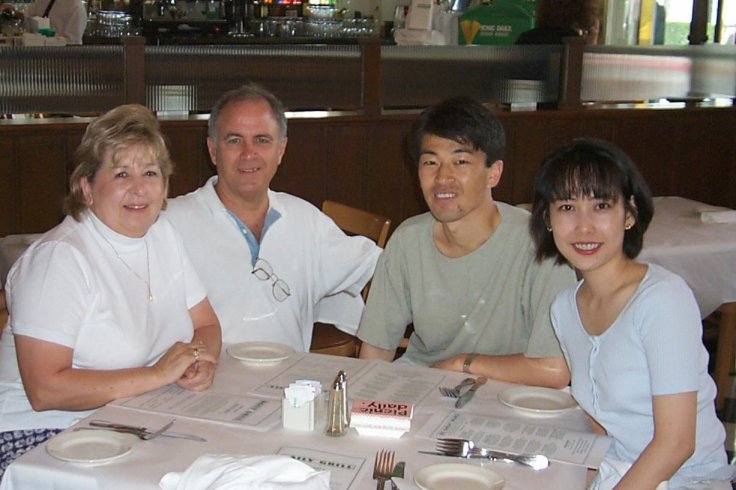
[2012 update: Yoshi and Hiraru had a baby girl, Reina, a couple of years ago. I haven't seen the baby (in person) yet but maybe we'll take a trip to Japan soon.]
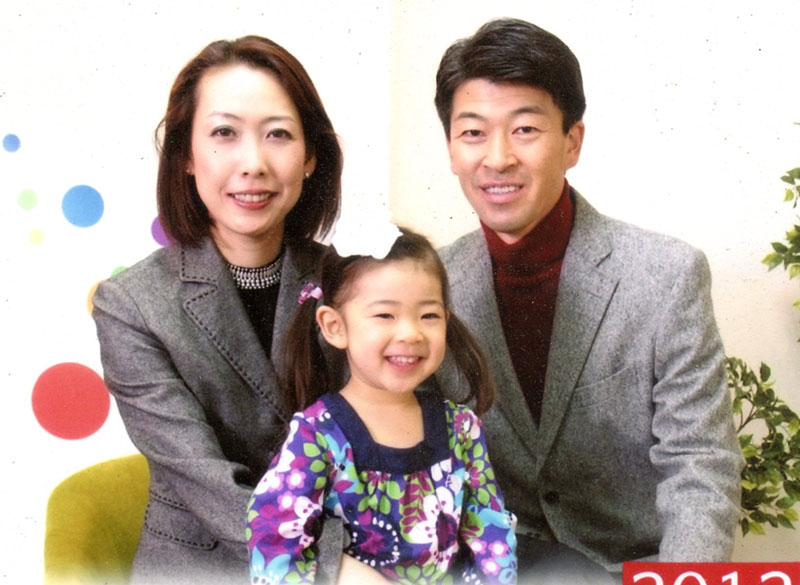
When I was in San Jose, I began jogging and continued when I was at Paradyne. I started running ten-kilometer races and eventually built up to marathons. In the 1980ís I ran a number of marathons, including New York, New Orleans (over the Lake Ponchartrain bridge), Washington, DC, Tampa, and eventually, the granddaddy of all marathons, Boston. For the runners reading this, my best time was about 3:25. Here I am running the New Orleans Marathon in 1980 with my cousin, Phil, at the end of the N.O. Marathon and in the New York City Marathon, on Fifth Avenue, heading towards the Bronx, in 1979. The guy in front of me, with the white hair, is Bob Wiggins, who was the president of Paradyne.
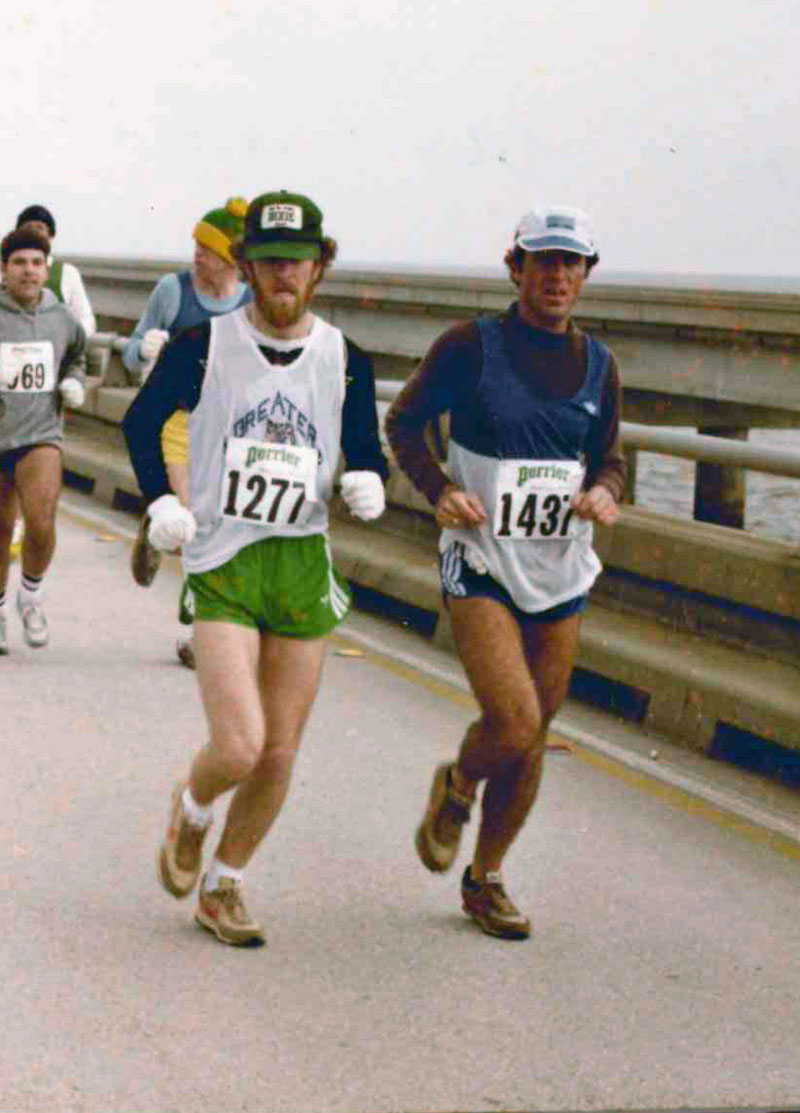
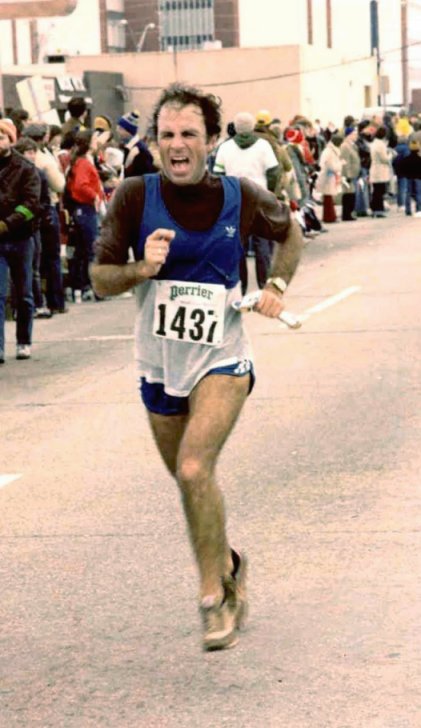
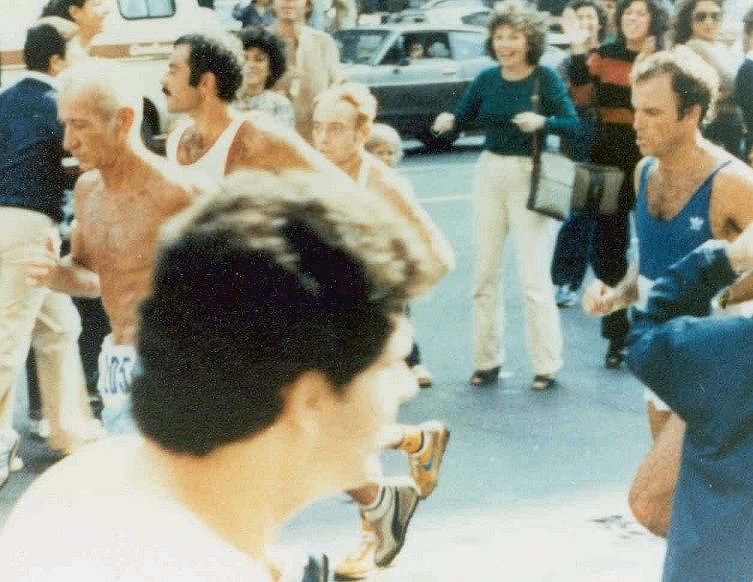
After I quit running, I did quite a bit of bicycle riding. I rode with a group each weekend, as well as in organized rides of up to 100 Km.
For the continuation of my story, click here.